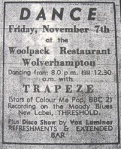European and English football football seems to be taking a turn for the worse
with racism, allegations of racism and bad behaviour rearing their ugly heads.
The landscape, with some exceptions, seems dominated by huge entities bloated on TV money and debt and below there is more debt and often a struggle to survive.
In England it is estimated that, outside the pro-leagues more than 1,600 teams have folded and most professional clubs have debts and tight or troubled finances.
Before the bloated top detaches into a mash-up of US-style franchises for the global highest bidders, with the devil taking the rest, is there anything to learn from Japan?
There we went to see Cerezo Osaka – known as The Flaming Pinks who were hovering just above the relegation zone in the J-League (Japan’s top tier).
They have a reputation for all-out attack – and a tendency to crash and burn with surges towards the top punctuated by relegation and eventually promotion.
Manchester United’s Shinji Kagawa is probably the best known former Pink in the
UK. Before moving to Old Trafford he was a steal at 300,000 Euros for Borussia Dortmund. He came through the ranks and helped Cerezo back up from J-League 2
The Pinks played Shimisu Pulse in one of their two home grounds – fortunately
not The Nagai Stadium – an athletic stadium – used during the World Cup in
Japan/Korea. It hosted the 0-0 draw between England and Nigeria.
Their 22,000 capacity ground, in a park – a bit like Aldershot’s ground but much bigger – had a 15,603 crowd with enthusiastic home and away
singing, chanting and flag-waving fans behind the goals.
Before the game we met up with Spurs and Osaka fan Trevor and his wife Yuu before buying dumplings with octopus inside them from a takeaway to eat with a couple of beers in the park before the match.
This and a visit to his mate’s football shop (excellent quality scarf purchased – much better than the thin ones in England) teed us up for a game which did not disappoint.
A significant difference was being handed a single teamsheet – the Match Day Program – taken up with a big picture of player Takuma Edamura on the front and pictures of the Osaka staff and players with their squad numbers on the back.
The rest of the back was taken up with the sponsors logos, graphics on ground safety and property advertising. It was a bit of a throwback to some of the pre-war programmes in the UK and a far cry from the mini-books for sale at £3 and more at English league grounds.
Osaka missed a an early sitter, went behind to penalty and hit the post twice before equalising with a diving header. Another tucked away before half-time was cancelled out by a second half goal from a well taken free kick.
Osaka won it five minutes before time, after having another effort disallowed
for offside. The flag waving, singing and chanting came over as slightly more choreographed than in England – although most UK league teams have their goal celebration tunes pumped out over their sound system for fans to join in.
In fact an uncharacteristic early goal storm at Port Vale has had fans in danger of repetitive strain injury singing along to the Dave Clark Five’s Glad All Over.
What was refreshing was the lack of any sense of imminent violence/abuse and the
refreshment. As we could at American Football, we got cold beers from our seats by holding up fingers to indicate how many we wanted and sent the cash hand-to-hand along our row of seats to the beer sellers going up and down the stand aisles.
The change and beers came back by the same route.
At half-time noodles with pork and ginger went down well. Eaten with hashi (chopsticks but shorter than Chinese ones) it was a tasty alternative to pies, pasties, sausage rolls, hamburgers and hotdogs.
Chopsticks and noodles might be a step too far for English fans but perhaps Liverpool and Everton could offer cups of Scouse, West Brom and Wolves grey paes
and bacon and Stoke and Port Vale hot filled oatcakes and lobby.
It could be a chance to link to local food – which seems to be getting as rare as
hens teeth in cafes, restaurants, pubs and bars in England.
Politeness, friendliness and respect for others might be too much of an ask in
the fevered tribalism of many English crowds but it would be a nice change from the
knuckle-dragging vileness that often passes for relations between English fans.
We blended in as best we could with the Flaming Pinks in out pink Port Vale
third choice strip but were in the seats – not up close and personal with the
singing, chanting and flag-waving fans in the standing areas fans behind the goals.
It all seemed very persuasive for those supporting the return of standing/cheering areas in England. On the other hand it was an exciting game which ended up 3-2 to Osaka with a goal late on for the home fans to go home happy.
Perhaps they were even happier after their team went to each side of the pitch
to line up and bow to the fans and receive an enthusiastic reception back. Too much of a culture shock for England but it might be a bit better than the desultory shuffling about and waving that sometimes passes as after-match thanks to fans in England.
Afterwards home and away fans seemed to have no problems leaving the stadium
together and exchanging pleasantries and a quick beer in a bar was followed by a meal at which you grilled your own food on a fire set in the middle of the table.
We aren’t all starry-eyed about Japanese football. Ultra-nationalists have been known to wave the Japanese military flag and to antagonise fans of other Asian countries with memories of Japanese military occupation at internationals.
However, reports of trouble at J-League games are hard to find although fans of Cerezo’s Osaka rivals, Gamba, had a clash with Urawara Reds fans some time ago
involving water balloons, water bottles and overturned barriers.
Aston Villa are the first Premier League club to support bringing back safe standing areas on a trial basis and offering Villa Park to try it – despite opposition from the football authorities and families of the Liverpool fans who died at Hillsborough.
The neat, considered, passing style we saw in the J-League was replicated when we watched the Japanese Olympic women’s football team lose 2-1 to the United States in the final at Wembley watched by 80,203 – a record for an Olympics women’s game.
The US women, top dogs since the competition started in 1996, went two goals ahead in the first half but Japan hit the bar twice in the half and then pulled a goal back.
There was some pretty tough tackling and a couple of accidental kicks in the
face for Japanese defenders – but no rolling around on the floor or surrounding
the referee to demand a sending off or a booking.
Perhaps some of the overpaid Europeans could learn a few things from the women. The TV exposure and crowds of 70,000 and 80,000, with an average of about 25,000, may have given a boost to the women’s game but that remains to be seen.
Inside Wembley the atmosphere was pleasant with Japanese and US fans taking joint photos of each other and the ‘neutrals’ appreciating the football and joining in the chants. The Japanese, as underdogs on the night, probably got most ‘neutral’ support.
Perhaps overseas fans mixing with English fans, for once without any ‘tribal’ traditions to uphold, and wodges of middle class families dampened down the passion and upped the good behaviour.
The only aggro was in the queues at half-time as a couple of blokes had a verbal
spat of alleged queue-jumping to get at the fizzy lager. It soon blew over.
On a hot night the only small food items on offer at the main franchises seemed
to be chocolate, crisps or donuts. Boiled sweets might have been nice.
At Old Trafford we saw the Blue Samurai – the Japanese men – beat an Egyptian side 3-0. Egypt ended up with only nine men left after injuries and a sending off.
Nice cheese and potato pies (very Lancashire/Manchester) for £2.70 and great
view with the other astronauts in the North Stand Tier 3. No yobs swearing or threatening and nice atmosphere in a 70,000 crowd.
Being neutral for most Olympic matches took away the tension of watching
your own lot mess up – and full-blooded support through most of a crowd.
It is a different way of watching. Not totally involved but, on the other hand,
no need to up the blood pressure medication.






